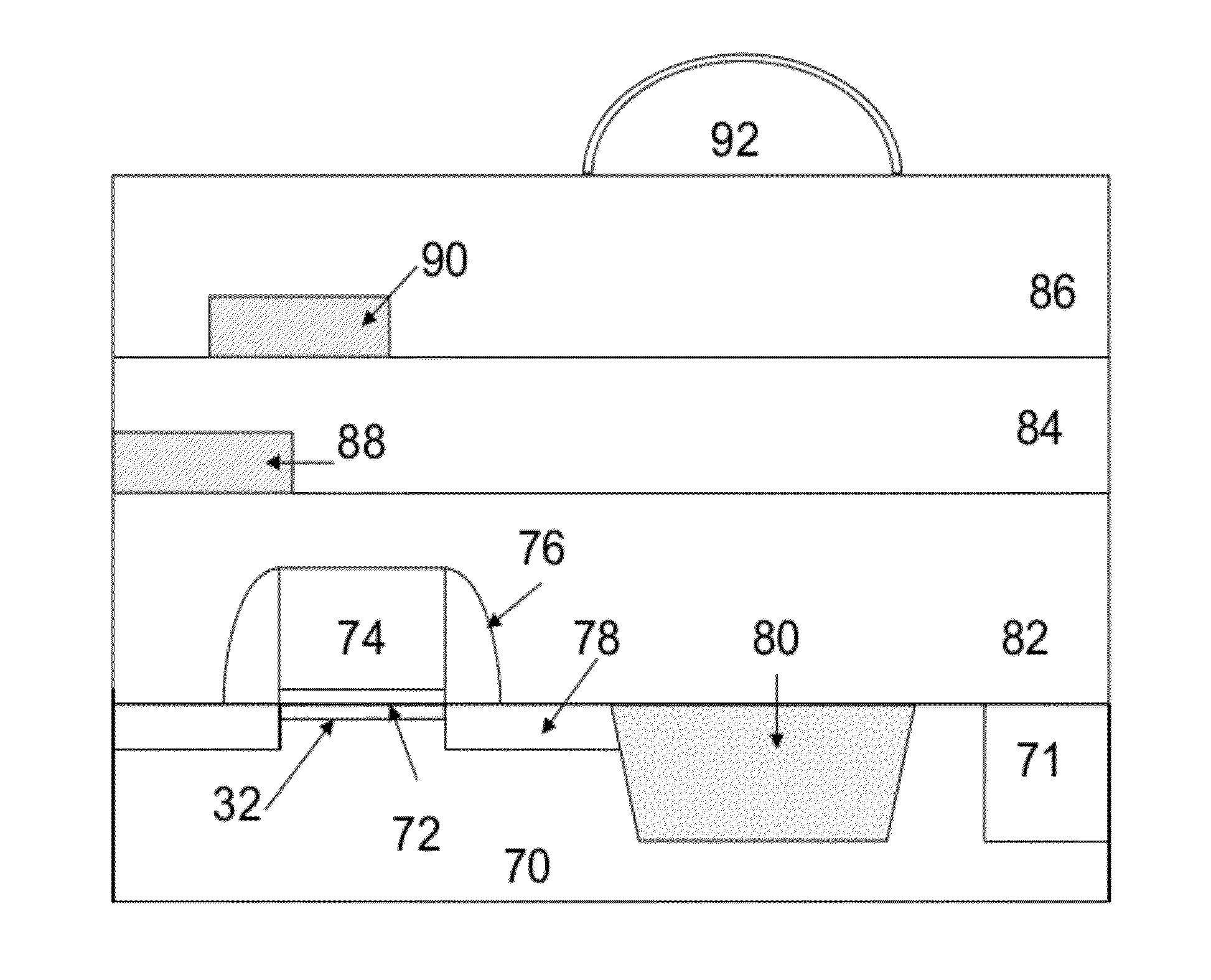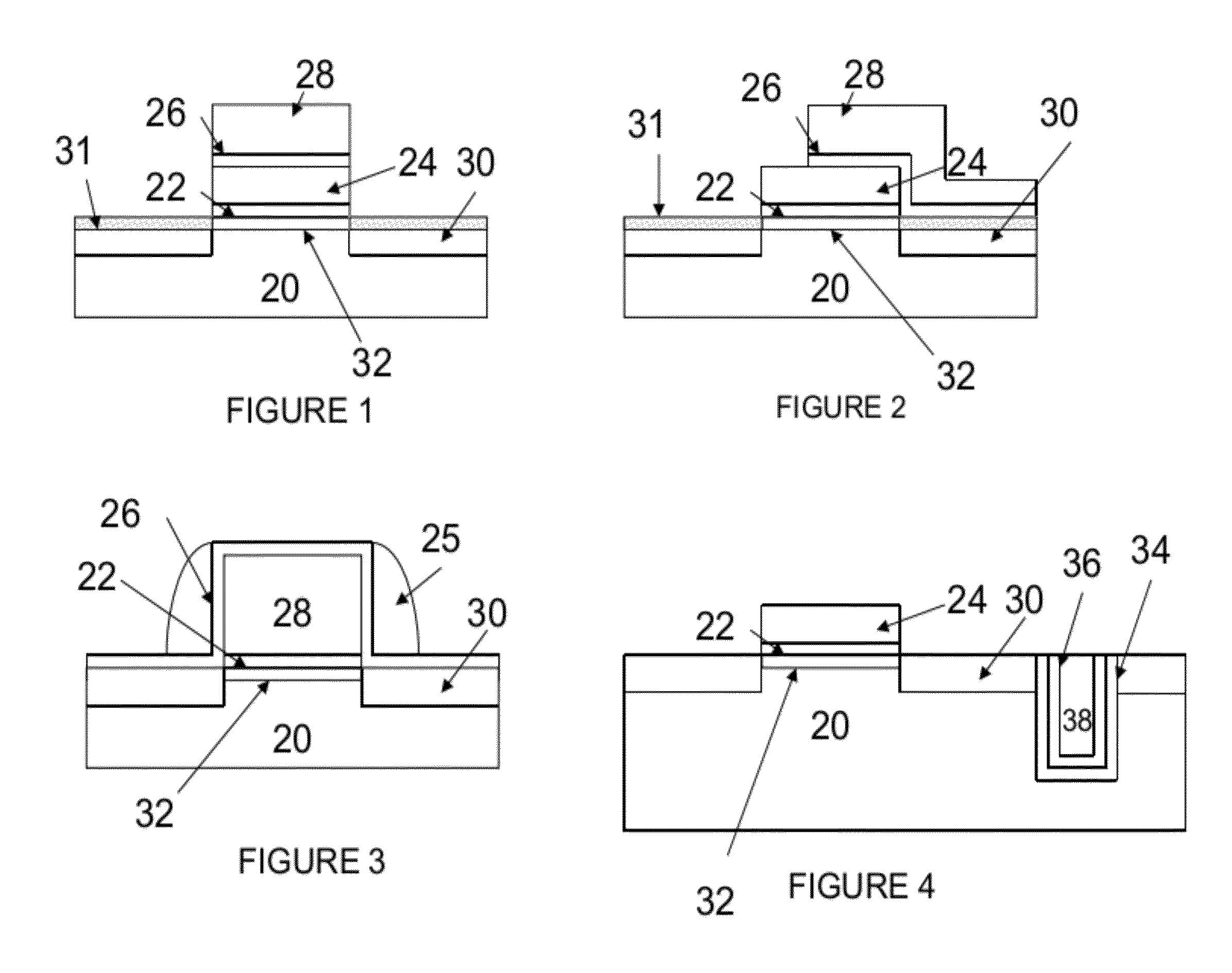Light Signal Transfer Device with Conductive Carbon Line
a light signal and conductive carbon technology, applied in the direction of semiconductor devices, electrical devices, nanotechnology, etc., can solve the problem that the photodiode's minimum area cannot offer good performance, and achieve the effect of improving the performance of the light signal transfer device, reducing the area of the channel, and increasing the photo reception area
- Summary
- Abstract
- Description
- Claims
- Application Information
AI Technical Summary
Benefits of technology
Problems solved by technology
Method used
Image
Examples
Embodiment Construction
[0019]The present invention proposes a novel method to fabricate a memory. In the method, the operation speed for storing data can be increased by the cell structure. The detail description will be seen as follows. A semiconductor substrate is provided for the present invention. In a preferred embodiment, as shown in the FIG. 1, a single crystal silicon substrate 20 crystallographic orientation is provided. The substrate 20 includes a pattern of active areas comprising separated doped region such as the source / drain regions. A thin dielectric layer 22 is formed on the substrate 20 to act as gate dielectric layer. Typically, the dielectric layer 22 can be grown in oxygen ambient at a temperature of about 700 to 1100 degrees centigrade. Other method, such as chemical vapor deposition, can also form the oxide. Subsequently, a conductive layer 24 is formed on the oxide 22 to act the floating gate. The conductive layer 24 may be formed of doped polysilicon, in-situ doped polysilicon. For...
PUM
 Login to View More
Login to View More Abstract
Description
Claims
Application Information
 Login to View More
Login to View More - R&D
- Intellectual Property
- Life Sciences
- Materials
- Tech Scout
- Unparalleled Data Quality
- Higher Quality Content
- 60% Fewer Hallucinations
Browse by: Latest US Patents, China's latest patents, Technical Efficacy Thesaurus, Application Domain, Technology Topic, Popular Technical Reports.
© 2025 PatSnap. All rights reserved.Legal|Privacy policy|Modern Slavery Act Transparency Statement|Sitemap|About US| Contact US: help@patsnap.com



